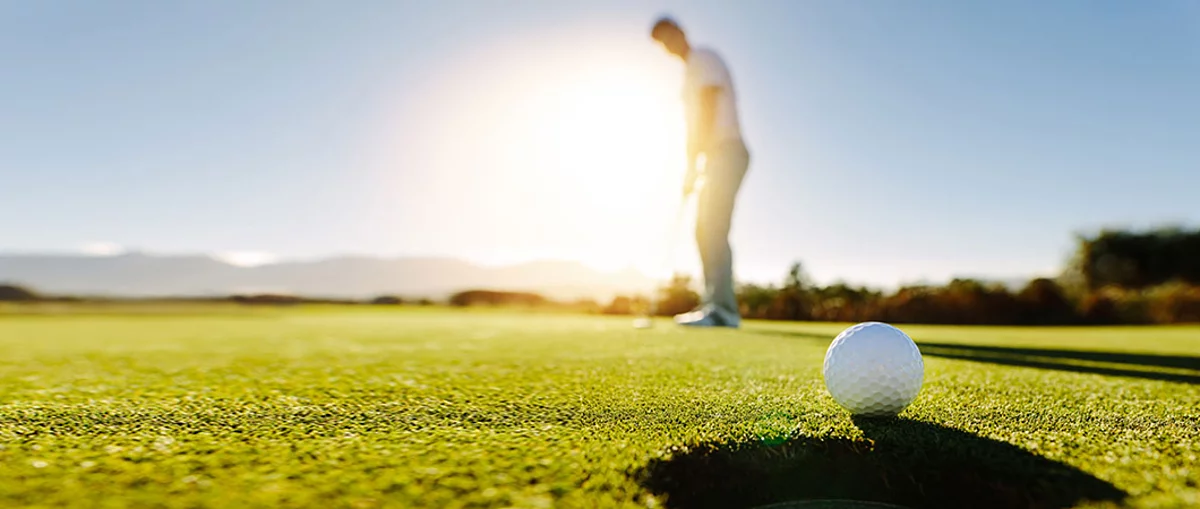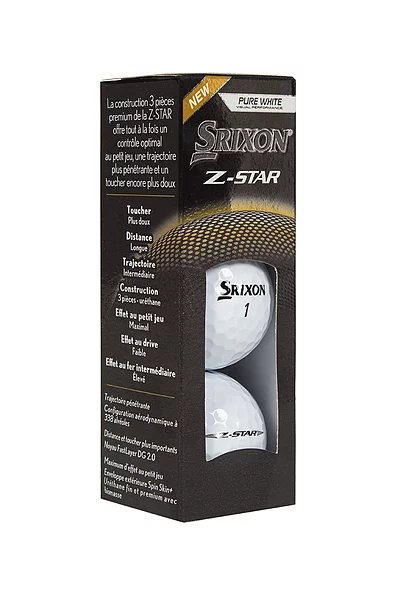Table of Contents
- Why is alignment important?
- Effects on your body from poor golf swing alignment
- More consequences of poor alignment
- How badly can bad alignment affect a shot?
- Practising lining up shots
- Golf swing alignment: How to align yourself
- Practice, practice, practice
- What should I aim for when hitting a golf ball?
- What shape should I play from the tee box?
- Set yourself up on the course for an above par performance with Glenmuir
- Final thoughts
Proper golf swing alignment is vital in golf, making all the difference between success and failure on the course. After all, golf pretty much revolves around the ability to aim.
But, would you believe it, many of us are guilty of not being able to match up to the target line, which means our golf shots aren't exactly going to score a hole-in-one anytime soon.
In this article, we are going to talk you through absolutely everything you need to know about golf alignment; what is it, why it is important, how it can affect not just your golf swing but also your upper body, and most importantly of all, how to perfectly align yourself to make the perfect golf shot a dream come true.
Let's get started by discussing the importance of alignment.
Why is alignment important?
Alignment is vital to your golf game. Without it, your brain receives a series of mixed and confusing signals from your body regarding your physical position as well as where you want to hit the ball. If your brain has no inclination as to where the intended target is, your chances of a successful swing are extremely limited.
Say you have your eyes firmly fixed on the ball, yet your clubface and body are lined up to either the left or right of your target; you'll need to make a series of adjustments to your swing. This has a knock-on effect on the swing plane and path.
Thus, a number of problems have been created. For example, if your body is aimed to either side of the target line, you will swing the club through the correct swing path, which will, unfortunately, create an all-too-common slice or pull.
While it does happen, there's no reason it should have to happen. With correct alignment, the problem disappears.
Effects on your body from poor golf swing alignment
Your swing becomes unpredictable when you're out of alignment. With that, it can cause muscle usage to become uneven, which will leave some muscles weaker than others.
If your upper body is making unnecessary twists or is not correctly aligned, both cartilage and ligaments can be affected. This can lead to completely preventable pain and discomfort.
More consequences of poor alignment
If you aren't correctly aimed at your target on the course, no amount of training or sheer natural target will save you from the pitfalls of realignment.
Thankfully, there's a lot you can do to ensure you have proper alignment.
Improper alignment will not only have you misinterpreting the target to either the right or left, but it will also cost your precious distance, too. A fade can fall into an ugly slice in no time and have you overcompensating your swing, which can throw up all sorts of problems for your game and, as we have just discussed, your body.
How badly can bad alignment affect a shot?
In short, bad alignment can be pretty catastrophic to your golf shot and overall game. If the club face is even so much as one degree open or closed at the impact on the golf ball, depending on speed, it's possible to miss by 15 yards, and often more.
Why risk a shot going array when you can hone your golf shots with just a bit of alignment practice?
Practising lining up shots
By far, the very best way to make sure your alignment is on point is by using alignment sticks.
But, what exactly are alignment sticks?
Alignment sticks are extremely useful and versatile golf training aids that can help rectify mistakes in a player's posture, the impact zone as well as both the downswing and backswing.
Not only do these sticks help improve your golf swing thanks to proper alignment, but they are also cheap and light to carry.
Alignment sticks are also, mercifully, very straightforward to use. Simply place a stick onto the ground alongside the intended target line; this gives a brilliant visual aid. Then, simply place your club face, feet and shoulders in the correct place.
It doesn't get much easier than that. And the good news is, the more you use this visual aid, the more second nature it becomes. Your shots will become straighter in no time.
Professional golf instructors often claim that the biggest mistake they see from amateur golf players is their aim, which often goes to the right. The reason behind this is at address, a golfer will raise their head so their eyes become level when looking at the target.
There are two things this then does:
-
Gives a false indication of where they are aiming
-
This leads to the player's stance being closed off
What players should instead be doing is keeping their ear parallel to the ground as they direct their sight up and down the target line. This is where a golf alignment stick comes in very handy.
Instead of lifting your head, direct your eyes up and down the target line; it will provide you with a more accurate reading of where your body - specifically your feet and shoulder - and your clubface should be aimed in order to hit an improved shot.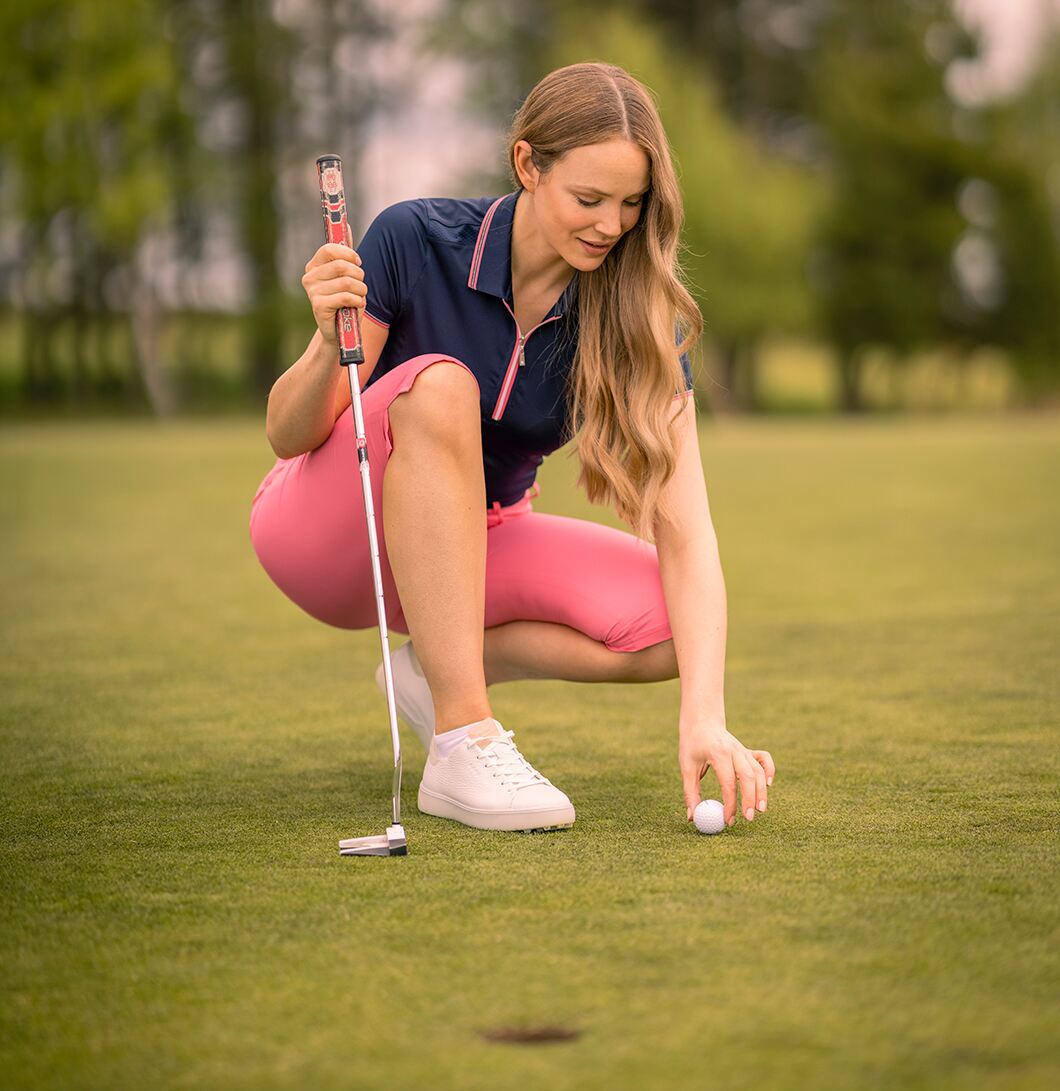
Golf swing alignment: How to align yourself
There are 3 key elements you should be mindful of in order to correctly align both your body and your golf shot.
-
Aim the club face so it's facing down your intended target line
-
Make sure your feet are aligned to the line also
-
Check that your shoulders are not closed, but slightly open or even square to the line
Sounds easy enough, doesn't it?
Although it will take some time to get used to, performing these 3 actions in their precise order will, almost always, allow you to be lined up correctly. This will therefore help you to land the ball closer to the intended target. (That is, if your swing is good enough, too!)
Let's discuss these 3 key steps in more detail.
Aligning the club face
In order to comfortably align yourself with the target, the important first step is to set the club face.
This is completed first because it's much easier when you haven't already set your feet; therefore, you have the freedom of movement if you want to adjust your clubface.
It also permits a clear view to make sure the edge of the club face is perfectly set at 90 degrees to the target line. Lastly, it allows you to perfectly set up both your feet and shoulder so that they run parallel to the line of the target set by your club face.
If you unwittingly address the golf ball with your shoulders or feet closed or open to the target line, it's the club face that will have to pick up the slack and compensate for this. Obviously, this can lead to mishaps such as slices or hooks.
In order to have your club face in the correct position, all you need to do is:
-
Standing behind the ball, direct your gaze to the fairway (or range, depending on where you are) to get a clear view of where you want the ball to land.
-
Using an alignment stick, place it along the ground from the ball to your proposed target. (If you don't have a golf alignment stick, you can try to picture this in your head, but some people might have trouble visualising this.)
-
Set-up over the ball; your club face should be pointed down the target line.
-
Next, ensure there is a 90-degree angle between the edge of the club and the target line.
Aligning your feet
The second step is to ensure your feet are set up in a position that makes you aligned properly with the golf ball.
The position of your feet will ultimately depend on the type of shot that you are attempting to make.
If it's a straight shot, for example, a golfer will need their feet to run parallel alongside the target line. If it's a slice or fade shot, the feet should be splayed slightly to the target line, and if it is a draw or hook shot you want to take, the feet will need to be closed to the target line.
Regardless of whichever position your feet are in, it's vital that you make the club face continually face down the target line, as we detailed above.
It isn't quite as difficult as it sounds. In order to adjust your feet into the best position, all you need to do is:
-
Ensure the club face is properly aligned alongside the target line
-
Set up your trail (back) foot initially so that it levels with the clubhead's leading edge
-
Make sure you and comfortable before placing your leading foot on the ground.
-
When you do, ensure you set it in line with your back foot. A good way to do this is to check that your toes are lining up so one foot isn't higher than the other.
The most important thing when aligning your feet is the lead foot. This foot helps encourage the direction of the knees, hips and shoulders as well as determining whether they are open, closed or square.
If this leading foot is too far above your trail foot, it causes a closed stance. Similarly, if the trail foot is too far above the leading foot, it will create an open stance.
Again, it's a great idea to use an alignment stick to check this. During a practice session, place the stick on the target line and then ensure your toes touch the stick, which will allow your feet to be in a square position.
Remember, getting the correct foot alignment is very important. Even if the club face is sitting pretty, if your feet aren't in the correct position, it can have a big impact on the quality of the shot, whatever golf club you are using.
Aligning your shoulders
Lastly, we'll take a look at shoulder alignment. Your shoulders need to be lined up in the same direction as your feet and the club face. When shoulders aren't in the correct position, it will affect the ball flight as it will manipulate the direction of the club path.
In order to align your shoulders during practice:
-
When you're having a quick practice on the course or driving range, use an alignment stick and put it down alongside the target line.
-
Align both the feet and clubface parallel with the stick.
-
Grab a short iron and hold it across your chest.
-
See whether your shoulders are square to the line. If they are, the iron should line up perfectly with the position of the alignment stick.
Practice, practice, practice
We'll say it again: practice is key when it comes to finding the correct alignment.
Just as you would practise your swing, it's important to practise your alignment. But, have patience; it will inevitably take time to get it right.
But it's worth it.
Not only will you see your overall game improve ten-fold thanks to the accuracy of your shots, but it'll also give you more confidence on the course - something that we could all use a little of now and again.
Think about heading out on the driving range a bit more than you otherwise would if you really want to get serious about correcting the poor alignment that is making your golf shots suffer. The range is a great place to practise, mainly because you can take your time to become fully comfortable with the steps required.
Oftentimes at a course, you'll need to hurry up as there will be players behind you, or you'll be with a group of mates who just want to speed on with the game and not wait for you to properly position yourself.
What should I aim for when hitting a golf ball?
The age-old question: where should I aim? As you'll no doubt know, course management is an essential part of playing golf, and obviously, you should aim for a target that is going to give you the best chance of winning.
While risks do sometimes pay off, it's not always important to go thrill-seeking. Often, it is safer (and recommended) to aim for the widest section of the green in order to make par, instead of going for a birdie that could potentially land you in hot water.
Of course, at the end of the day, golf is all about ensuring you minimise the risk whenever you play. Making fewer mistakes than those you're playing against is all it takes to get a lower score and therefore win the round.
Amateur golfers should always try to select an area to aim at that will reduce the risk of racking up too many points on every hole.
What shape should I play from the tee box?
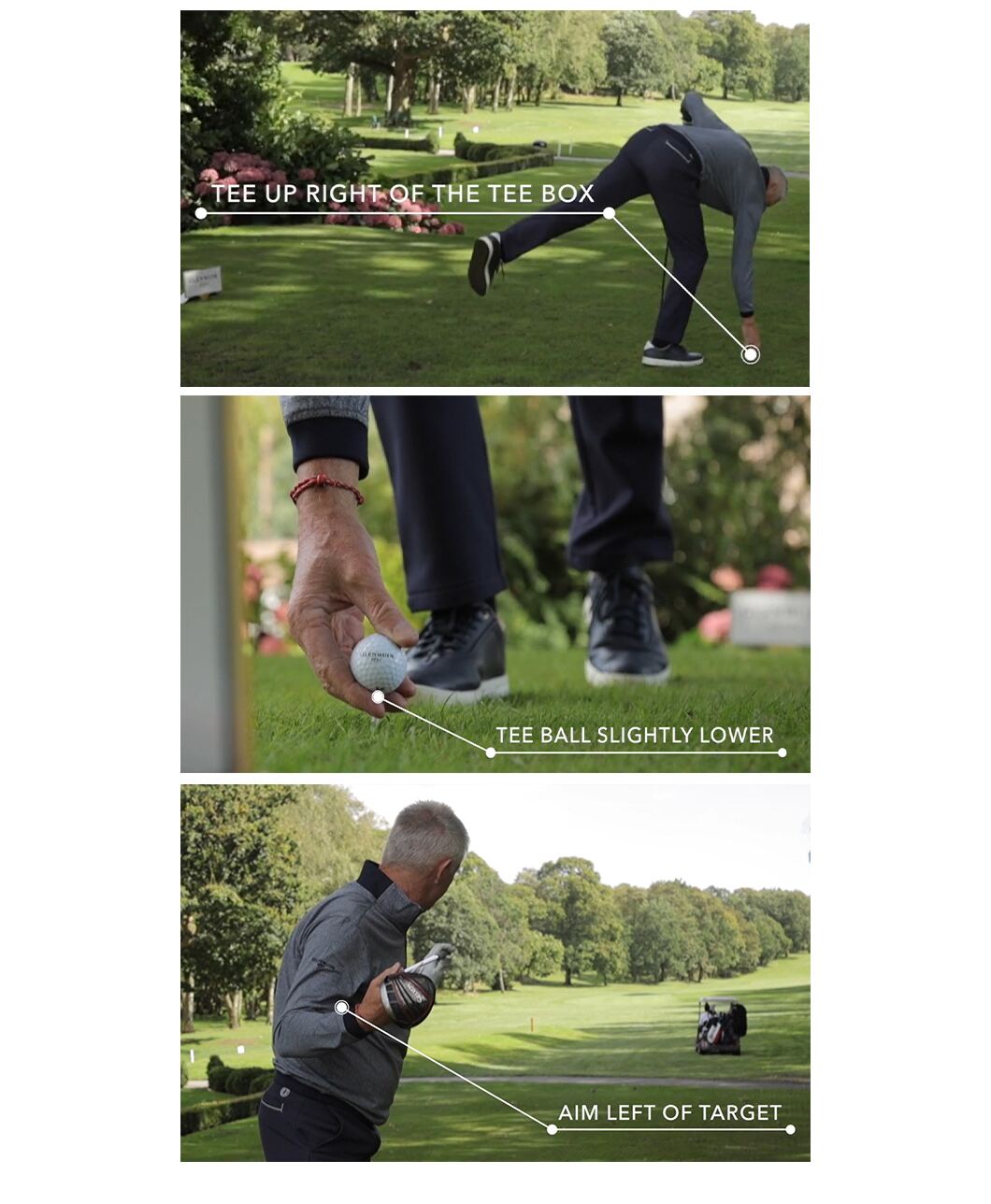
To play a fade from the tee:
1. Tee up on the right hand side of the tee box
2. Tee ball slightly lower than usual
3. Open shoulders and feet to ain left of target
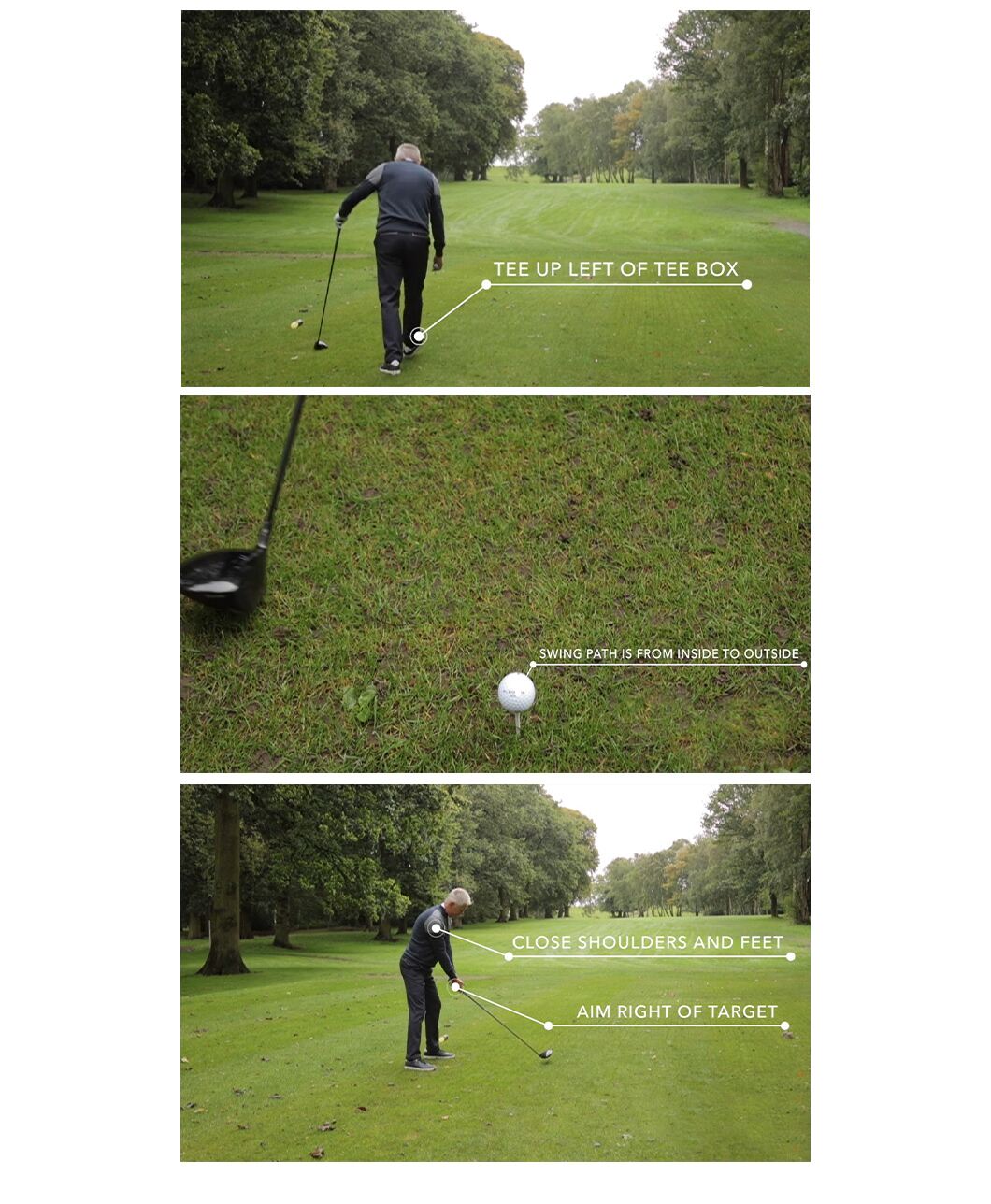
To play a draw from the tee:
1. Tee up on the left hand side of the tee box
2. Tee height should be normal or slightly higher than normal
3. Close shoulders and feet aiming right of the target to encourage a swing path from inside to outside
Set yourself up on the course for an above par performance with Glenmuir
When you look and feel your best on the golf course, you'll always play at your best. At Glenmuir, we have been kitting out both professional and amateur golfers for the last 30 years. Operating from Scotland, the spiritual home of golf, we have everything you could need to complete the course in style - as well as looking the part on the 19th, too.
Why not have a browse through our unique and highly desirable designs in men's and women's golfing fashion as well as gifts and accessories too?Final thoughts
We hope this article has been helpful in allowing you to delve a bit deeper into the world of alignment to see just how important it is for your golf swing.
No one, not even the professionals, can take a truly successful golf shot if they don't have the correct alignment when it comes to the club face, feet and shoulders.
Unless, that is, Lady Luck is firmly on their side.
Even the pros need a little help now and then, with many of them choosing to practise the alignment of their golf swing by using an alignment stick. As we have discussed, golf alignment sticks improve your alignment to your target and can help with your posture during practice which is essential for achieving a perfect and steady golf swing.
It might seem like you do it automatically because it sounds like one of the most simple aspects of the game, but it takes practice in order to be able to aim with precision. And, when it goes wrong, it can go disastrously wrong.
But, if you follow all the steps we have outlined and take the time to master them - remember, success won't come overnight - you'll be on your way to helping to upgrade your aim, thus improving your overall game.
